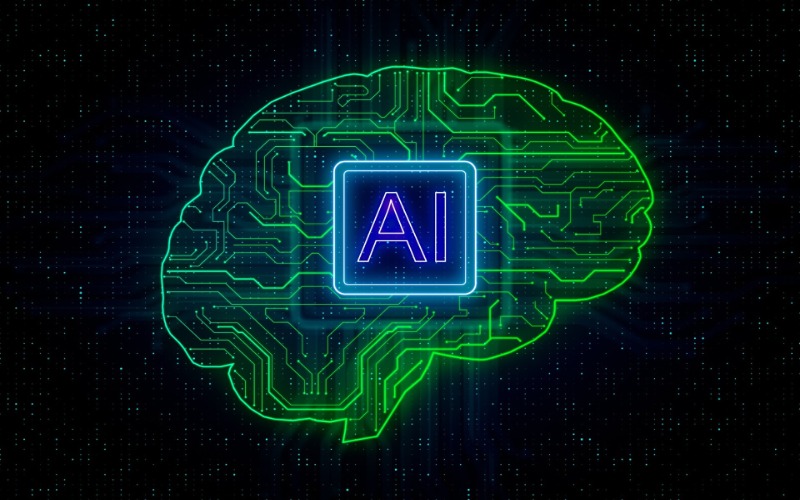As artificial intelligence (AI) becomes more ubiquitous, initial fears about the technology are replaced by a growing willingness to embrace its many benefits. Consequently, AI tools are rapidly transforming many aspects of business today. For example, by automating a wide variety of tasks and providing deep insights through data analysis, AI enhances efficiency and allows organizations to accomplish more in less time.
Despite AI’s remarkable capabilities, there are still areas where it cannot replicate human performance. It’s imperative for companies to recognize these limitations so they can build an environment that leverages AI’s strengths while capitalizing on human abilities. This balanced approach maximizes strengths, minimizes weaknesses, and propels businesses to exciting new levels of efficiency and profitability.
The Revolutionary Power of AI
Organizations have quickly adopted AI and are reaping the many benefits promised by its creators. For instance, the Computing Technology Industry Association (CompTIA) reports that 56 percent of businesses use AI to improve business operations, and 46 percent use it for customer relationship management. There is little doubt that AI helps companies process and analyze data more efficiently, automate repetitive tasks to reduce manual errors, and increase productivity by optimizing workflow. For example, Facebook uses AI technology called DeepText to better understand and utilize the thousands of posts submitted by users every minute. Accomplishing this manually would require countless employees working endless hours—something AI can achieve in seconds.
AI tools have evolved from basic automation to sophisticated systems capable of natural language processing, image recognition, and predictive analytics. In addition to DeepText, Facebook uses an AI technology called DeepFace, which automatically identifies people in a photo shared on its platform. Experts say the technology surpasses human ability at facial recognition. But while AI has significant positive effects in specific business areas, it cannot exceed or even meet human performance in others.
What AI Can’t Do
Current iterations of AI tools fall short in three areas essential to sustained business success. These shortfalls are why it is imperative for businesses to create a work environment that balances AI usage with human leadership. This collaborative environment provides the foundation necessary for greater organizational success. Three key areas where human skills surpass AI’s capabilities include:
- Employee development. While AI excels at providing personalized learning paths, tracking progress, and generating data-driven insights, it is incapable of mentorship, an essential component of business employee development. Lacking emotional intelligence, AI is unable to provide personalized feedback. If not compensated for with human interaction, these limitations can stunt personal growth and creativity in an organization, both of which are critical for long-term success.
- Motivation. Successful organizations have a motivated workforce sustained by leaders who cultivate emotional engagement and ensure employees feel a sense of belonging and value. AI can automate rewards but lacks the emotional connection and a nuanced understanding of the human condition required to inspire a workforce. Genuine human interaction is crucial to keeping workers happy and driven to succeed.
- Innovation. Human connection is vital for organizational decision-making and innovation. A recent study found that the best humans outperform AI in creative tasks. While AI is limited to its training data, humans can “think outside the box” and better adapt to changing conditions. Human brainstorming sessions often yield more diverse ideas than AI algorithms and AI-driven creativity lacks the emotional depth of human creativity. In addition, human leaders can use storytelling to inspire innovation and foster a sense of purpose, keeping employees emotionally engaged and connected to the company’s growth.
According to McKinsey & Company researchers, the organization of the future will be “enabled by gen AI (and) driven by people.” The researchers also say that “generative AI can empower people—but only if leaders take a broad view of its capabilities and deeply consider its implications for the organization.” Companies that strike the proper balance between AI and human input can create environments that propel companies to new market heights.
Building a collaborative work culture that promotes trust and mutual respect and values human input while embracing the most recent AI advances is critical. This goal can be accomplished by regularly discussing the ethical implications of AI in the workplace and ensuring AI is used responsibly to support, rather than undermine, human roles and relationships. For instance, leaders could use AI for data-driven insights and efficiency while emphasizing regular employee interaction and providing customized feedback to maintain human connections.
Maintaining the Human-AI Balance
Undoubtedly, innovations like AI-driven human resource analytics, personalized learning platforms, and smart office environments are changing workers’ perceptions of AI. More employees and leaders now recognize AI tools as a collaborative tool instead of a job displacement threat. But, for all of AI’s benefits, it cannot replace the human elements of mentorship, emotional intelligence, and personalized feedback essential to business growth and sustained success. Organizations that realize this and utilize AI while prioritizing human interaction have the best chance to excel in today’s marketplace. These companies recognize that prioritizing human interaction fosters trust, loyalty, and a sense of community—elements essential for a healthy work environment that serves as the foundation for sustained business growth and success.











